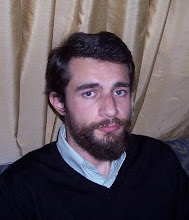Prospective (forward) temporal-spatial models are essential for both action and perception, but the literature on perceptual prediction has primarily been limited to the spatial domain. In this study we asked how the neural systems of perceptual prediction change, when change-over-time must be modeled. We used a naturalistic paradigm in which observers had to extrapolate the trajectory of an occluded moving object to make perceptual judgments based on the spatial (direction) or temporal-spatial (velocity) characteristics of object motion. Using functional magnetic resonance imaging we found that a region in posterior cerebellum (lobule VII crus 1) was engaged specifically when a temporal-spatial model was required (velocity judgment task), suggesting that circuitry involved in motor forward-modeling may also be engaged in perceptual prediction when a model of change-over-time is required. This cerebellar region appears to supply a temporal signal to cortical networks involved in spatial orienting: a frontal-parietal network associated with attentional orienting was engaged in both (spatial and temporal-spatial) tasks, but functional connectivity between these regions and the posterior cerebellum was enhanced in the temporal-spatial prediction task. In addition to the oculomotor spatial orienting network, regions involved in hand movements (aIP and PMv) were recruited in the temporal-spatial task, suggesting that the nature of perceptual prediction may bias the recruitment of sensory-motor networks in orienting. Finally, in temporal-spatial prediction, functional connectivity was enhanced between the cerebellum and the putamen, a structure which has been proposed to supply the brain's metric of time, in the temporal-spatial prediction task.
The cerebellum predicts the timing of perceptual events.
O'Reilly JX, Mesulam MM, Nobre AC.
J Neurosci. 2008 Feb 27;28(9):2252-60.
http://www.ncbi.nlm.nih.gov/pubmed/18305258?dopt=Abstract
Sunday, March 2, 2008
Subscribe to:
Post Comments (Atom)

No comments:
Post a Comment